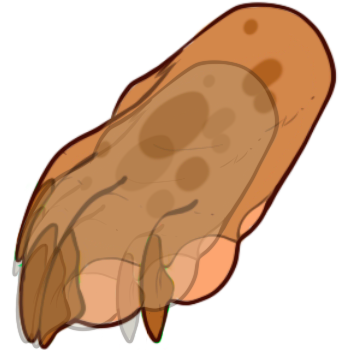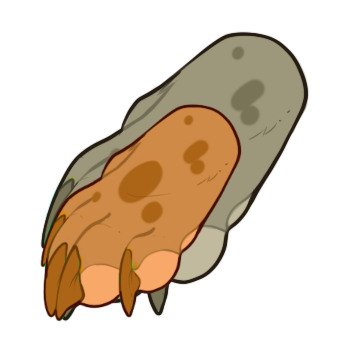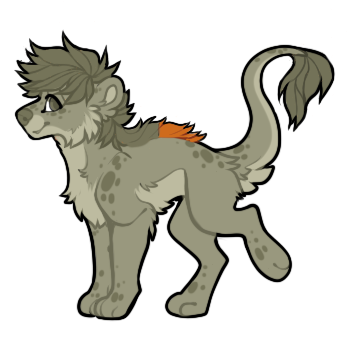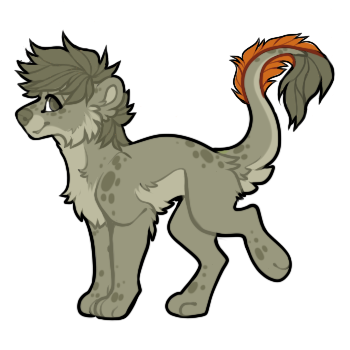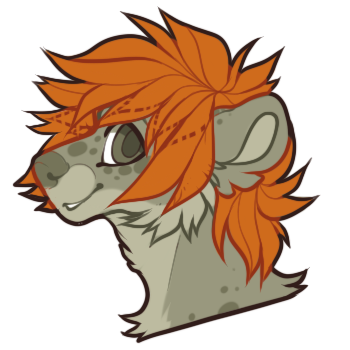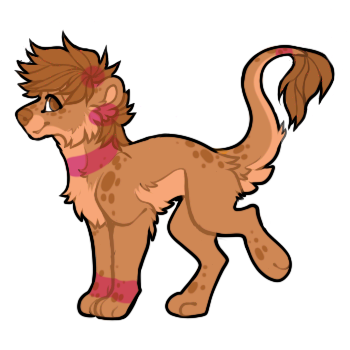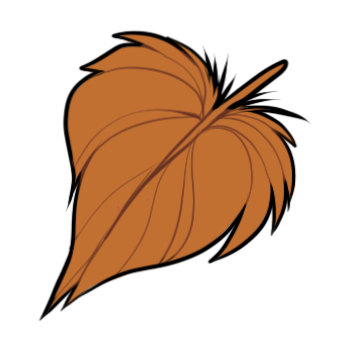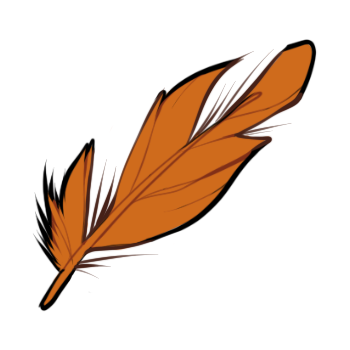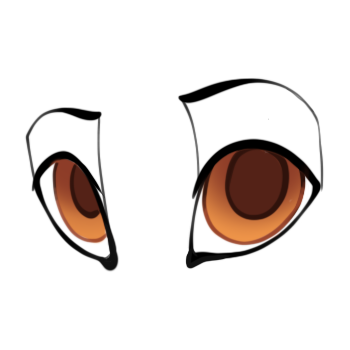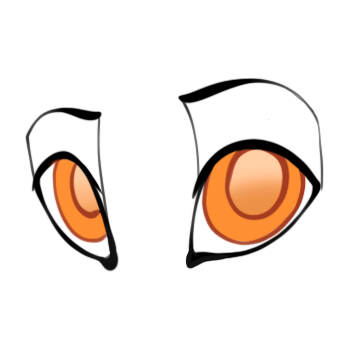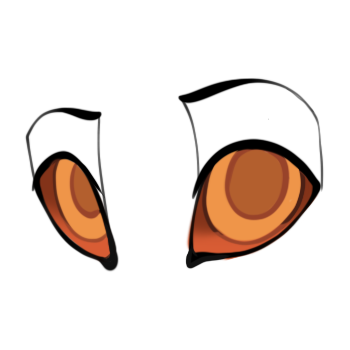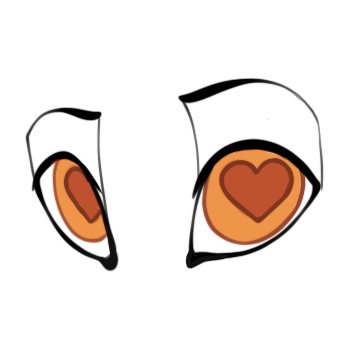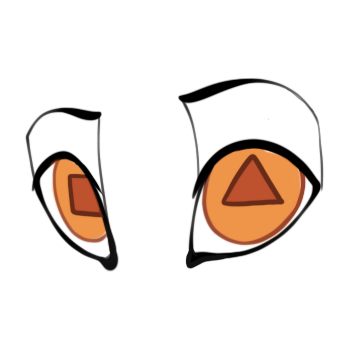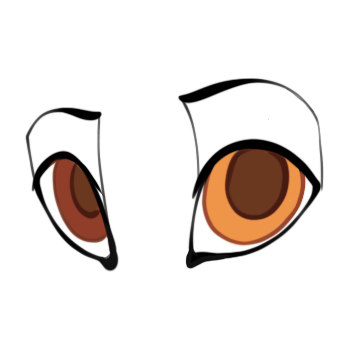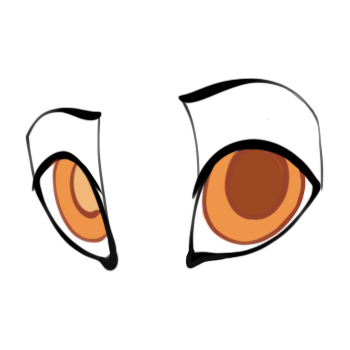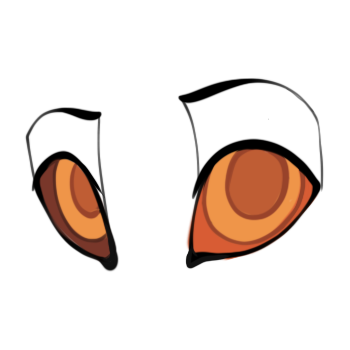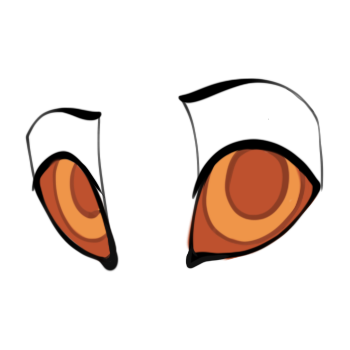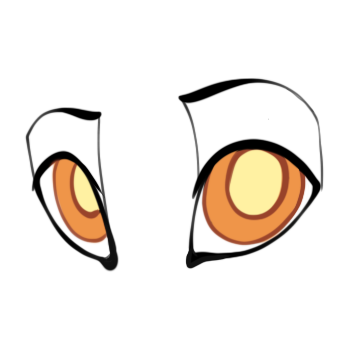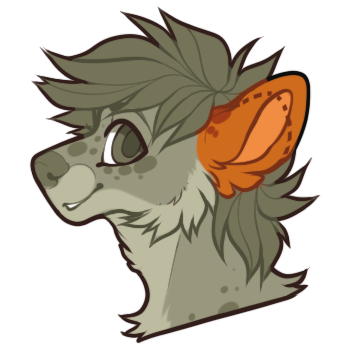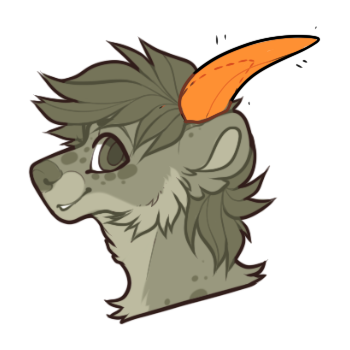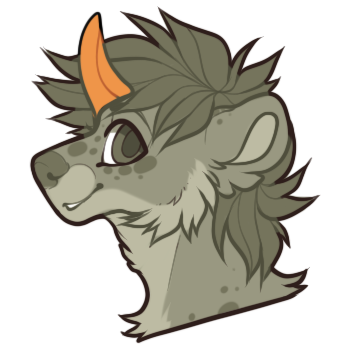Traits
Longer Mane - Down Back (Uncommon)
Kiamaras with this trait have a longer mane that extends for more than half way down their back, but does not reach their rump.
This mane can have sections missing.
This can be used in conjunction with Hair Length traits.
Cannot be inverted.
Here you can find a link to the new length guides for this trait.
The maximum area this trait can go into is the orange area. We judge this based on where the end of the mane meets on the back.
Longer Mane - Down Tail (Uncommon)
Kiamaras with this trait have a longer mane that extends for more than halfway down their tail (either on top, underneath, or both) but does not reach their rump.
This mane can have sections missing.
This can be used in conjunction with Hair Length traits.
Cannot be inverted.
Here you can find a link to the new length guides for this trait.
The maximum area this trait can go into is the orange area. We judge this based on where the end of the mane meets on the back.
Slightly Longer Hair (Uncommon)
Kiamaras with this trait have slightly longer hair than the average Kiamara.
You can find out how long this hair type can be by checking out our Size Guides.
Oddly Placed Feathers (Uncommon)
Kiamaras and Dromedairies with this trait have earned the ability to show off their feathers outside of the standard placements.
Shaped Feathers (Uncommon)
Kiamaras and Dromedairies with this feather trait have feathers that have been turned into another shape, such as a Star or a Heart for example.
The shape can be any kind that could typically be made out of a feather with all parts connecting to the rachis.
Damaged Feathers (Uncommon)
Kiamaras and Dromedairies with this feather trait have feathers that have been damaged.
The damage can be anywhere and take on any extent, however, it must still be recognisable as a feather with some barbs attached to the rachis.
Slightly Longer Fur (Uncommon)
Kiamaras with this trait have slightly longer fur that normal.
This fur can be any texture such as wired, curly, tufted, pinata-themed, etc without needing an additional trait!
Length of fur must remain within the orange zone of the fur guides, unless used in conjunction with a higher-rarity hair trait.
Fur that is on the inside of the Kiamara must be a similar length or shorter to the fur around the outside.
Here you can find a link to the new length guides for this trait.
The maximum area this trait can go into is the orange area. We judge this based on where the longest piece of fur ends.
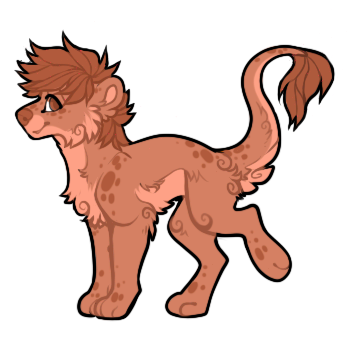


Tail Length Variant (Uncommon)
Kiamaras with this trait have longer or shorter tails than the average Kiamara.
Kiamaras with this trait attached to their trait list will have it listed with the type of tail length they have:
- Tail Length Variant (Shorter)
- Tail Length Variant (Longer)
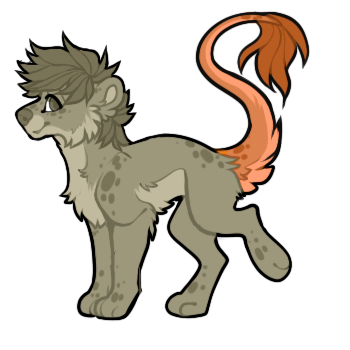
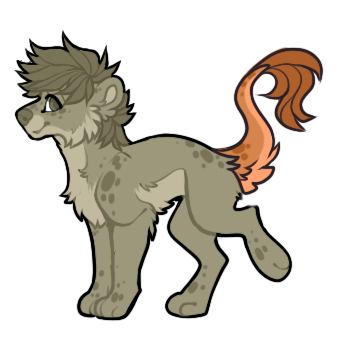
Multicoloured Eyes (Uncommon)
This trait allows for 2 or more colours to be present in the same Iris.
These can be completely different colours, such as blue and red, or different shades of the same colour.
This can appear as a gradient, patterned, or any other way you wish to depict it. The design in each eye must be symmetrical unless used in conjunction with the Heterochromia trait.
This can also effect different parts of the eyes if the Kiamara also has the Coloured Sclera and/or Shaped Pupil traits.
Shaped Pupil (Uncommon)
This trait allows for a Kiamara's pupil to be a shape other than a circle or slit.
Can be used in conjunction with the Pupil Shape Heterochromia trait.
Heterochromia (Uncommon)
This trait allows for the Iris of both eyes to be two different colours.
This can also effect different parts of the eyes if the Kiamara also has the Coloured Sclera, Lighter Pupil, and/or Shaped Pupil traits.
Coloured Sclera (Uncommon)
This trait allows the colour of the sclera (Eye Whites) to be any colour other than white or the default sclera colour on the bases provided.
This trait can also be used in conjunction with the Heterochromia and Multicoloured Eyes traits.
Lighter Pupil (Uncommon)
This pupil trait covers pupils that are lighter than the iris colour.
This can also be another colour that is lighter/brighter than the Iris.
If the No Iris trait is present, this trait only applies if used in conjunction with the Coloured Sclera Trait
Directional Ears (Uncommon)
Kiamaras with this trait have ears that face forwards rather than the average Kiamara, whose ears face backwards.
This ear type can also work in conjunction with other traits, such as the flopped ear trait and ear size traits. If used with the former, it must be obvious this trait is used.
These ears must still remain within the Common Ear box unless used in conjunction with an ear size trait.
If used on its own:
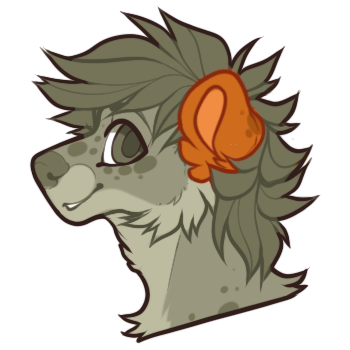
If used in conjunction with the floppy ear trait:
Any other ear trait, such as size traits, fluffier ears, etc can still be attached to these ears, however, the flopped ear combined with the directional ear types have specific rules.
Click one of the above examples to go to the trait you would need to obtain the looks above.
Please note; the first example is to show shape only and would be bound by the size trait applied to the ear on length.
The directional x flopped ear combinations can be styled differently depending on whether you wish to go for a more canine-based floppy ear or a bunny-based floppy ear.

this is a good example of a bunny-type flopped directional ear. If the tip is pulled upwards, it would be facing forward due to the position in front of the cheek

Whilst the shape is certainly bunny-like, if the tip is pulled upwards the ear would be facing backwards due to the position behind the cheek. This does not meet the directional trait requirement.
Flopped Ears (Uncommon)
Kiamaras with this trait have flopped, or half-flopped ears.
This can be symmetrical or asymmetrical.
Must face backwards unless used in conjunction with the Directional Ears trait.
Must be common in size unless used in conjunction with any Ear-Length trait.
Guides for the official linesets can be found here.
NOTE: If you decide to have your Kiamara's ears being asymmetrical, you will need to make two references: one for each side of the Kiamara. This is so we can accurately trait the ear sizes for you.
If used on its own:
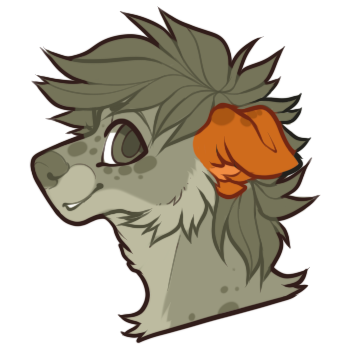





If used in conjunction with the directional ear trait:
Any other ear trait, such as size traits, fluffier ears, etc can still be attached to these ears, however, the flopped ear combined with the directional ear types have specific rules. These are only a few examples and more versions can be made depending on how flopped you want the ear to be!
Click one of the above examples to go to the trait you would need to obtain the looks above.
The directional x flopped ear combinations can be styled differently depending on whether you wish to go for a more canine-based floppy ear or a bunny-based floppy ear.
 this is a good example of a bunny-type flopped ear. if the tip is pulled upwards the ear would be facing backwards due to the position behind the cheek.
this is a good example of a bunny-type flopped ear. if the tip is pulled upwards the ear would be facing backwards due to the position behind the cheek.
Fluffier Ears (Uncommon)
Kiamaras with this trait have fluffier ears than the average Kiamara.
This trait applies to any part of the ears, including tufted bits on the tip similar to a lynx.
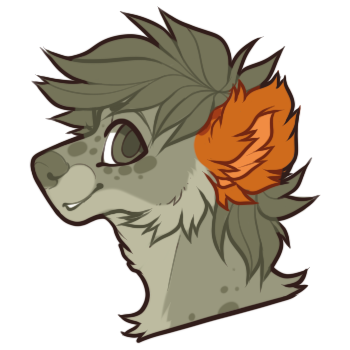
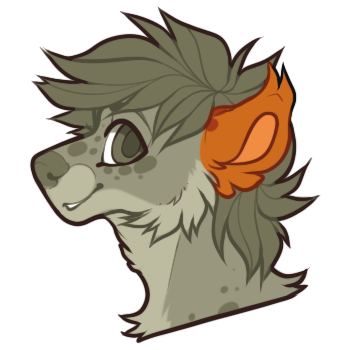

Slightly Larger Ears (Uncommon)
Kiamaras with this trait have ears that are slightly larger than the average Kiamara's.
You can see how large this rarity allows ears to be by looking at our Sizing Guides on the public PSD line sets.
Slightly Larger Horns (Uncommon)
Kiamaras with this trait have slightly larger-than-average horns, or slightly larger-than-average antennae should they have the Antennae Growths trait.
These horns are judged based on the size guides found with the Kiamara lineset being used.
You can find all size guides and linesets here!
Uni-Horn (Uncommon)
Kiamaras with this trait can only have one horn.
This horn can be present anywhere on their head, though it is most commonly found on the centre of the Kiamaras forehead unless used alongside the Body Horn or Facial Horn traits. This horn can be any shape.
Paw Size (Uncommon)
Kiamaras with this trait have paws that are either larger or smaller than average.
This does not have to be symmetrical, nor does this need to affect all paws.
You can even have Kiamaras with larger and smaller paws.
Kiamaras with this trait attached to their trait list will have it listed with the size of paws they have:
- Paw Size (Bigger)
- Paw Size (Smaller)
- Paw Size (Bigger and Smaller)
